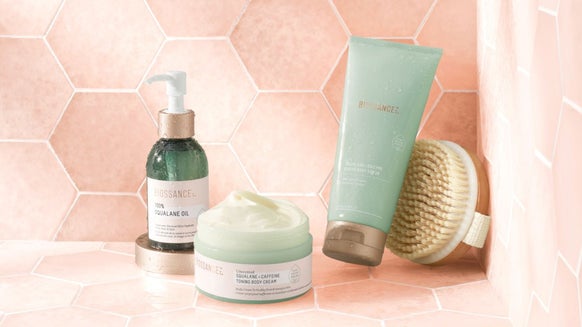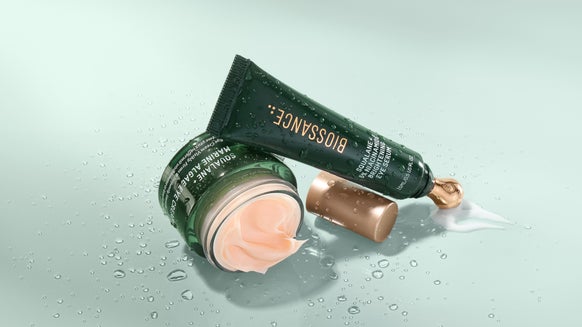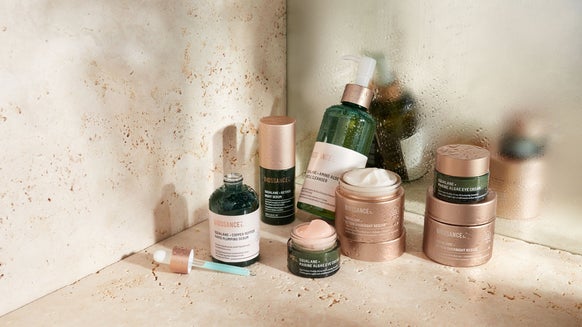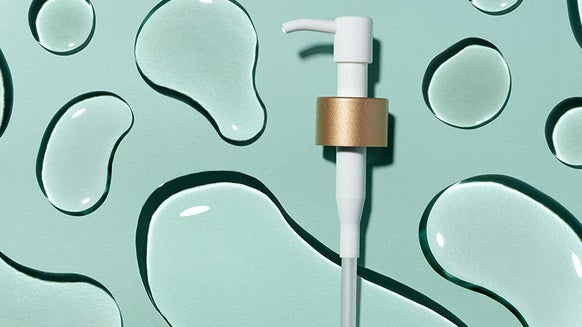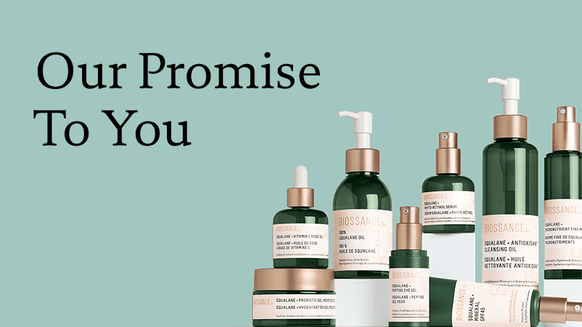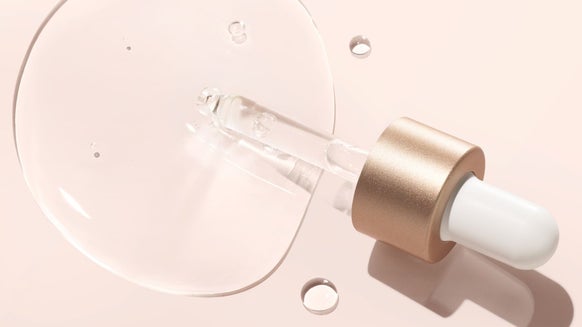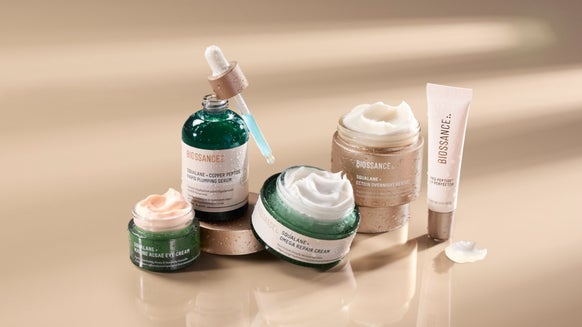Sunburn. It happens to the best of us. Even though we know we should be wearing SPF daily and reapplying every 90 minutes, we sometimes forget or miss a spot. The result: Hot, painful, and lobster-y skin in need of sunburn relief FAST. We’ve got you covered with these nine easy tips for soothing sunburned skin.
Keep it Clean
Sunburn is an inflammatory reaction to UV damage to the skin’s outermost layers. This compromises your skin’s protective moisture barrier, making it more susceptible to pathogenic bacteria.
Keep your skin clean and avoid post-burn breakouts using a gentle, soap-free cleanser such as our Amino Aloe Gentle Cleanser. Our gentle foaming cleansing gel envelops your skin in a soothing formula to gently break down makeup and impurities. Meanwhile, aloe— a tried and true sunburn relief remedy—calms irritation while sugarcane-derived squalane delivers soothing hydration.
Moisturize
A lightweight, calming, fragrance-free moisturizer is the first step toward relieving sunburned skin. Moisturizers hydrate the upper layers of the skin and seal water and hydrating oils inside the epidermis, helping to ease the dryness and discomfort associated with sunburn.Look for products containing ectoin – such as our Copper Peptide Rapid Plumping Serum. Ectoin binds with water to create a protective, nourishing hydration shield around cells, quenching skin while reducing oxidative stress and inflammation.
Follow the serum with our newly reformulated Probiotic Gel Moisturizer, which acts like a fire extinguisher for red, inflamed skin. Our sustainable, biotech-born squalane and bisabolol hydrate, soothe, and nourish on contact while our encapsulated probiotics deliver live, beneficial bacteria to help rebuild your skin microbiome and jumpstart the healing process.
Hydrate From the Inside
When it comes to sunburn relief, skincare is just the start. Sunburn can actually cause dehydration by pulling fluid from your body toward the skin’s surface as it seeks to heal the burn. Replenish your fluids by drinking extra water immediately after a burn and for the next few days. Cool Hot Skin
When your body detects damage to the top layer of skin cells, it begins producing molecules that attract immune cells to the skin. This can cause blood vessels to leak into the spaces between cells and other skin structures, making your skin feel hot and painfully sensitive. A cold compress or cool bath can help relieve sunburn-related swelling and oven-hot skin. Use a wet washcloth instead of ice, as icing can actually reduce the blood supply to your skin and cause further damage.
Avoid Steamy Showers
Hot water is last thing you want when your skin feels like it’s on fire. Along with the added discomfort, steamy showers can strip the skin of much-needed moisture, slowing down the healing process and making your skin feel even more irritated. Opt for cool or lukewarm water instead, and consider bathing instead of showering, as the sensation of water pelting your skin can be uncomfortable.
Get Some PM Pain Relief
A painful sunburn can compromise your sleep, leading to even more dehydration. The American Academy of Dermatology recommends anti-inflammatory NSAID painkillers, such as Advil or Motrin, to help relieve sunburn-related discomfort and swelling. Take it at mealtime to avoid stomach upset, and always check with your doctor before trying any new medications.
Avoid Certain Skincare Ingredients
Skincare actives that increase cell turnover—such as retinoids and alpha hydroxy acids and exfoliating scrubs— should not be used on sunburned skin. While your skin may be able to tolerate these ingredients when its healthy, applying them to sun-damaged skin can lead to redness, irritation, and dehydration.You should also skip spritzing yourself with perfume and avoid products with added fragrance while you’re sunburned, as these can also irritate delicate skin.Throw Some Shade
Sunburned skin can become more easily damaged by further sun exposure. Double down on sun protection by slathering on an SPF of at least 30, wearing a hat, and staying in the shade.Resist the Urge to Peel
Post-sunburn peeling occurs as the body tries to rid itself of damaged cells and can start as little as three days after a burn. But while it may be tempting to exfoliate or peel your flaking skin, doing so can expose new skin cells while they’re still developing, making you more susceptible to irritation and damage and starting the cycle of redness and irritation all over again.Once you reach the peeling stage, the only thing left to do is wait. The peeling usually ends about seven days after a burn. 

